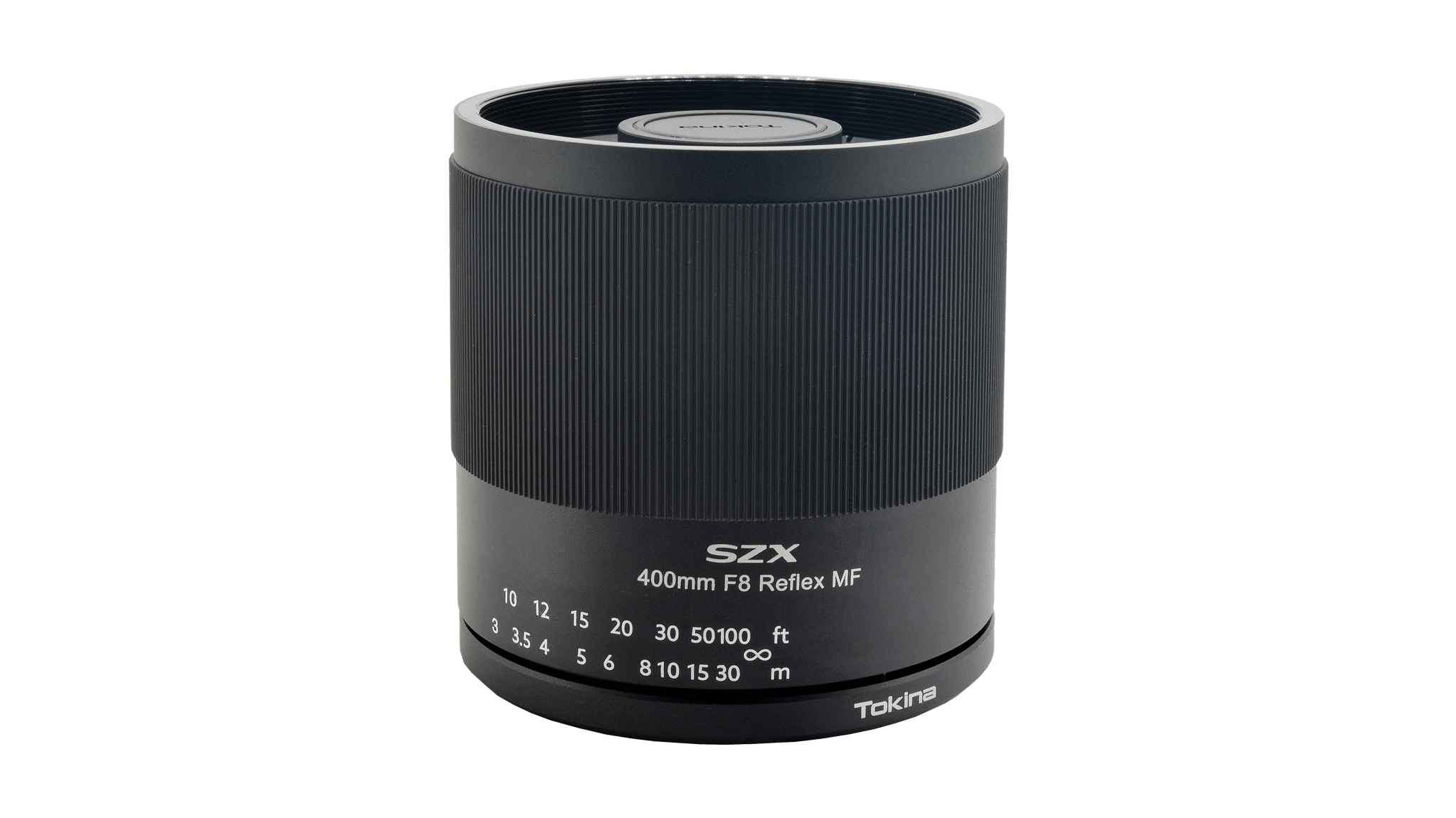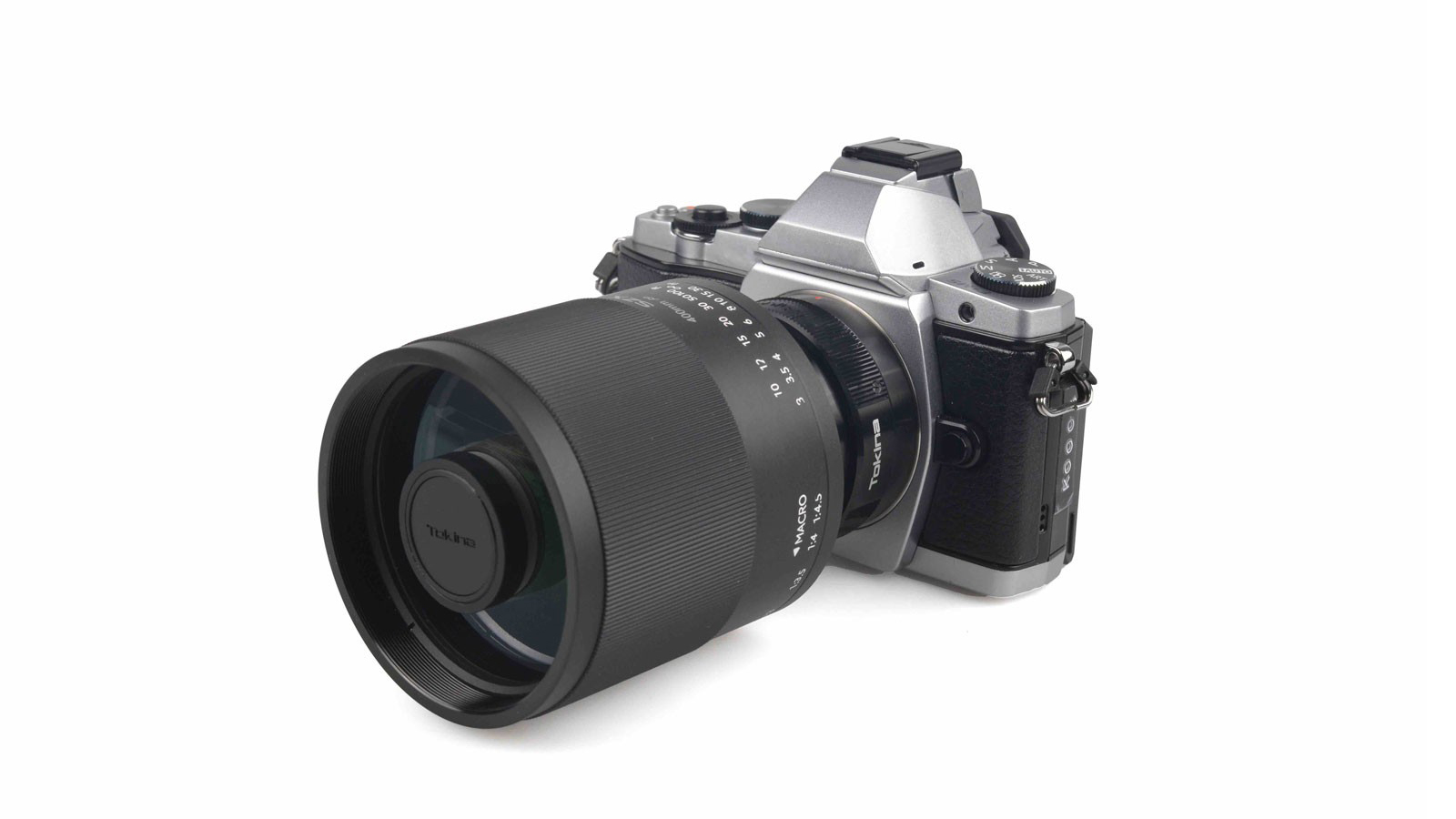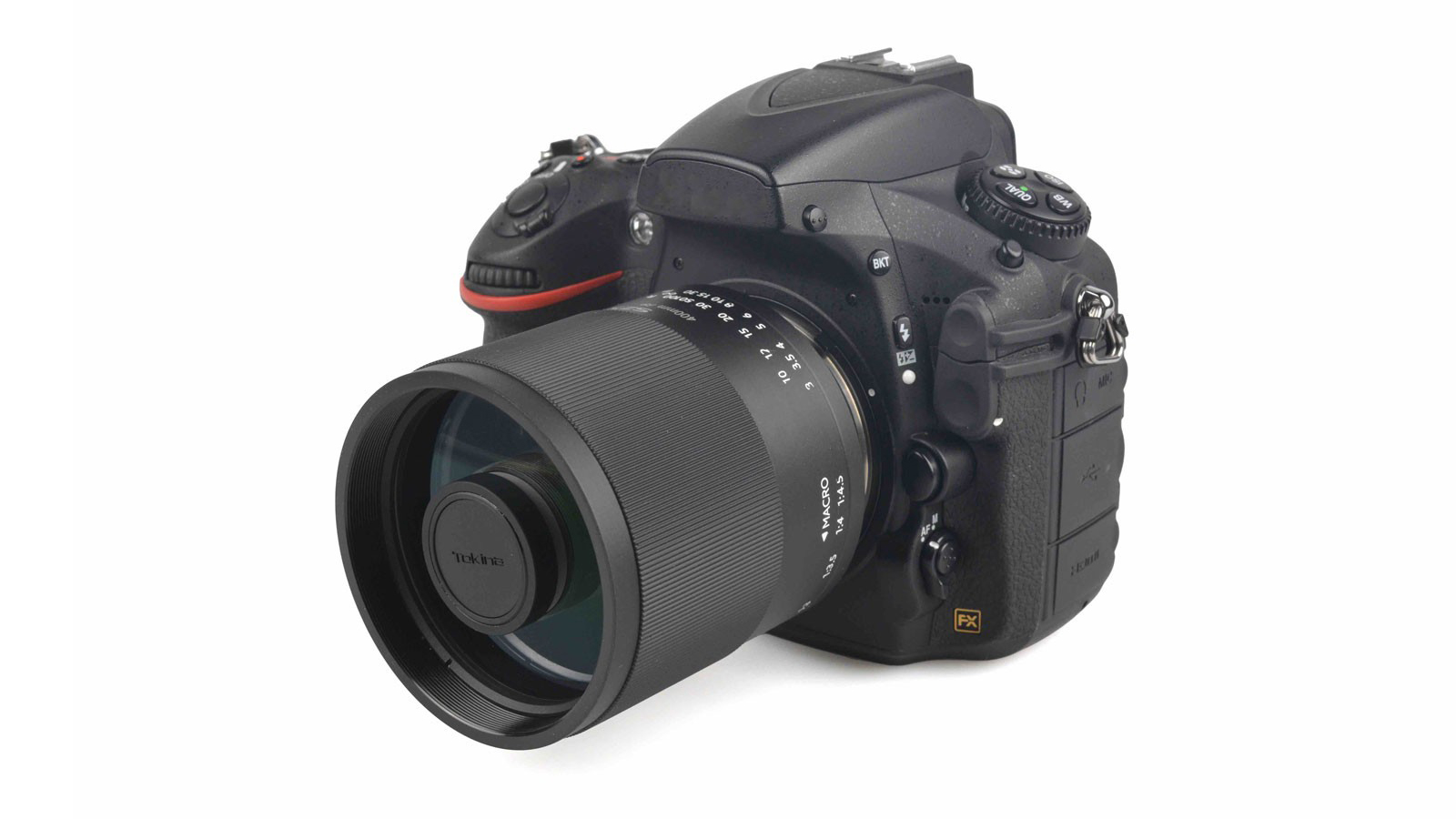Palm-sized, $250 Tokina 400mm f/8 now available for Canon RF and Nikon Z
Tokina's 400mm f/8 mirror lens is just $250 and fits in the palm of your hand – and now it's available for Canon RF and Nikon Z

The Tokina SZX 400mm f/8 Reflex MF – an ultra compact and extremely affordable telephoto lens – is now available for Canon RF and Nikon Z mounts, in addition to the existing Canon EF, Nikon F, Sony E, Fujifilm X and Micro Four Thirds options that were already on sale.
If you've ever wanted a 400mm lens that fits in the palm of your hand, the Tokina SZX 400mm f/8 Reflex MF is it. And the new mount options mean that it's an intriguing native alternative to clever lenses like the Canon RF 600mm f/11 IS STM and the $11,999 Canon RF 400mm f/2.8L IS USM.
Okay, they're not technically native options – the lens uses the old T2 mount, with Tokina supplying an appropriate adapter when you buy it. It's also a strictly manual focus affair, so you'll need those old school photography skills to use it for sports and wildlife, but it's a great way to get huge reach without breaking the bank when you've just spent thousands on a Canon EOS R5 or Nikon Z7 II!
The Tokina SZX 400mm f/8 Reflex MF will be available with Canon RF and Nikon Z adapters from 07 May 2021.




ORIGINAL STORY (20 Jul 2020): The new Tokina SZX Super Tele 400mm F8 Reflex MF sounds like a blast from the past, but mirror lenses like this one could stage a comeback, thanks to advances in digital cameras and sensor design.
Telephoto lenses use a 'refracting' principle – a series of lenses which bend the light to form the image on the sensor. Mirror lenses use a radically different design, with a parabolic mirror at the back of the lens to focus the image on a mirror mounted centrally at the front, which bounces the light back down the lens to the camera sensor.
In photography this is called a 'catadioptric' lens, but astronomers will immediately recognise this as a Cassegrain design. Because the light is 'bounced' up and down the barrel, it produces a much shorter, lighter lens for any given focal length.
The best camera deals, reviews, product advice, and unmissable photography news, direct to your inbox!
What's wrong with mirror lenses?
Back in the 1980's, mirror lenses had a brief popularity as an inexpensive super-telephoto design, but so-so optical performance and a fixed aperture of f/8 (typically) limited their appeal at a time when high ISO/sensitivity settings were for emergencies only and there was no such thing as image stabilisation.
But this has changed. And if Canon can launch the Canon RF 600mm f/11 IS STM and Canon RF 800mm f/11 IS STM, both with a fixed aperture of f/11, then Tokina's lens starts to make sense.
Two things have changed since mirror lenses had their heyday. One is that modern digital cameras can deliver great results at ISO settings simply not available back in the days of film. F/8? Not a problem! For outdoor photography at least, you can simply wind up the ISO to get the shutter speeds you need.
And for those situations where you don't want to use a higher ISO, there's always in-body image stabilization, now close to being a standard feature on all but a handful of full frame mirrorless cameras.
We can't comment on image quality until we've seen a sample lens, and we don't know the price either – though historically, mirror lenses have tended to be budget alternatives to 'real' telephotos.
The Tokina SZX Super Tele 400mm F8 Reflex MF is not just a couple of mirrors in a tube, as its optical design is a hybrid combination of mirrors and lenses.
However, as well as lacking an aperture mechanism, like other mirror lenses it's also manual focus only.
Mirror lenses never quite went away, incidentally. Samyang has been quietly marketing its 300mm F6.3 ED UMC CS for some time now, and we've also spotted an Opteka 500mm f/8 HD Telephoto Mirror Lens for T Mount which is designed around the same principles.




Will it fit your camera?
The Tokina SZX Super Tele 400mm F8 Reflex MF uses the old T2 mount, based around adaptors for a whole series of different camera bodies. Adaptors will be available for Nikon F, Canon EF, Sony E, Fujifilm X and Micro Four Thirds cameras, either sold as a kit with the lens or available separately.
Interestingly, although lens makers have adapted the Cassegrain telescope design for lenses, we haven't seen one based around a Newtonian reflector yet. We can't think why!
Read more:
Best telephoto lenses
Canon RF 600mm f/11 IS STM review
Canon RF 800mm f/11 IS STM review
Canon RF 400mm f/2.8L IS USM
Canon RF 600mm f/4L IS USM
Best Canon RF lenses
Best Nikon Z lenses

Rod is an independent photography journalist and editor, and a long-standing Digital Camera World contributor, having previously worked as DCW's Group Reviews editor. Before that he has been technique editor on N-Photo, Head of Testing for the photography division and Camera Channel editor on TechRadar, as well as contributing to many other publications. He has been writing about photography technique, photo editing and digital cameras since they first appeared, and before that began his career writing about film photography. He has used and reviewed practically every interchangeable lens camera launched in the past 20 years, from entry-level DSLRs to medium format cameras, together with lenses, tripods, gimbals, light meters, camera bags and more. Rod has his own camera gear blog at fotovolo.com but also writes about photo-editing applications and techniques at lifeafterphotoshop.com

